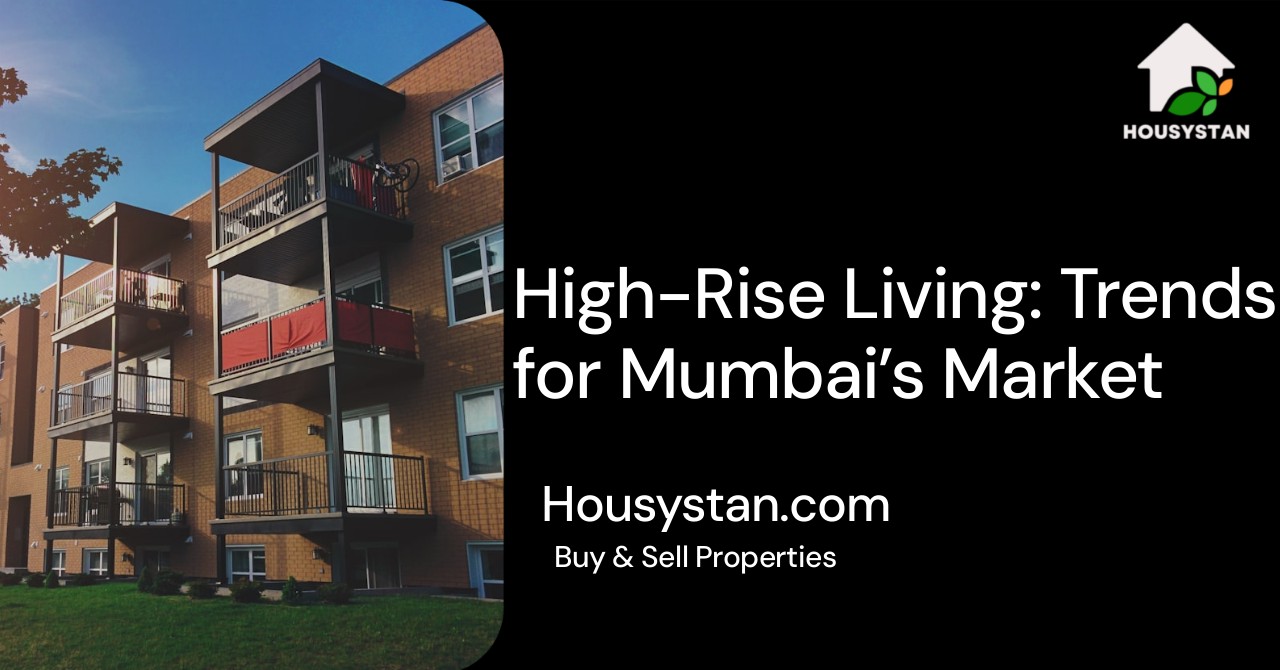High-Rise Living: Trends for Mumbai’s Market
Read latest blogs and articles from Housystan

The Information mentioned here was last updated on:
28/12/2025High-rise living in Mumbai has evolved into a dynamic trend, reshaping the city’s iconic skyline while offering residents a blend of luxury, convenience, and urban sophistication. With limited land availability and a rapidly growing population, vertical expansion has become the preferred solution for modern homebuyers in Mumbai. This upward shift is not only changing the way people reside but also influencing lifestyle preferences, neighborhood development, and real estate investment opportunities across the city.
One of the most prominent trends shaping Mumbai’s high-rise market is the integration of smart home technologies. Contemporary residential towers are equipped with automated systems for lighting, security, temperature control, and energy management. These innovations enhance comfort, promote sustainability, and appeal to tech-savvy buyers who value efficiency and modern amenities in their daily lives.
Another significant aspect of Mumbai’s vertical housing boom is the emphasis on community-centric living. Developers are focusing on creating inclusive environments by incorporating landscaped gardens, rooftop lounges, fitness centers, swimming pools, play zones, and co-working spaces. These shared facilities foster social interaction among residents and provide a holistic living experience that caters to both families and professionals seeking a balanced lifestyle in the heart of the city.
- Verified Tenants/Buyers
- Unlimited Property Listing
- Zero subscription/charges fee
Location remains a key factor driving demand for high-rise apartments in Mumbai. Areas such as Bandra, Lower Parel, Powai, Andheri, and Worli have emerged as hotspots due to their connectivity, proximity to business districts, entertainment hubs, and educational institutions. Homebuyers are prioritizing projects that offer easy access to transport networks, shopping malls, healthcare centers, and recreational venues, ensuring convenience and an elevated quality of life.
Furthermore, developers are increasingly adopting sustainable construction practices to address environmental concerns and meet regulatory standards. Features like rainwater harvesting, solar panels, energy-efficient appliances, and green building certifications are becoming standard in new high-rise projects, reflecting Mumbai’s commitment to responsible urban growth.
In summary, high-rise living in Mumbai is defined by innovation, sustainability, and community-driven design. These trends are not only meeting the needs of today’s urban dwellers but also setting new benchmarks for real estate development in India’s financial capital. As the demand for vertical homes continues to surge, Mumbai’s skyline will only become more striking, offering endless possibilities for residents seeking a vibrant and future-ready lifestyle.